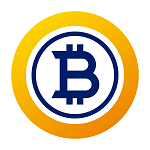Latest news about Bitcoin and all cryptocurrencies. Your daily crypto news habit.

“Build it and they will come” has unfortunately proven to not translate well with the crypto space. In 2017, ambitious projects raised record setting amounts of money and today, many of these projects have utilized their warchest to bring their dreams to reality. While there are a handful of major projects that have already garnered activity in the magnitude of millions, many alternatives have, so far, failed to see any meaningful use. Here are three of largest projects that fit the bill:
#3 Bitcoin Gold (BTG)
For many, it likely doesn’t come as a huge surprise that the Bitcoin fork has failed to garner much meaningful adoption. While Bitcoin Gold has a couple of interesting features, mainly, a new mining algorithm that is ASIC resistant as well as replay protection, it also comes with a lot of baggage. There is evidence to suggest that the developers pre-mined and dumped 200,000 BTG at the all-time high price of US$500. They also promoted a scam wallet that stole close to US$3 million from unknowing victims. Overall, there is little merit behind the project, especially in comparison to Bitcoin and Bitcoin Cash.
However, at a market cap of almost US$500 million, one would expect that something fruitful is taking place on the network. The reality couldn’t be further from the truth. With daily transactions averaging around 1,000, BTG transactions happen less than once per minute. As it is expected that a majority of the activity is trading related.
#2 Augur (REP)
By crypto standards, Augur is a project whose history dates back ages. While the predictions market protocol has been right around the corner for years, it was finally released in July of this year. Unfortunately for longtime supporters, eagerness for the project quickly diminished as activity on the platform was not as expected and has steadily drained since launch.
At time of writing, there are close to 1,300 active predictions markets on Augur and almost US$1.2 million at stake. While not impressive for a project valued at $140 million, it’s not a terrible metric, at first glance. The reality is much more dire: only 96 of those markets are liquid (as in, there is any activity placed) and a majority of money at stake comes from just two of those markets. Liquidity remains a big issue as the most liquid market still maintains a margin of over 5%. To put the sheer lack of activity into statistics, less than 20 actions have been executed on the market in the past day.
#1 0x Protocol (ZRX)
There seems to be a lot of love for 0x almost universally throughout the crypto space. And this is not necessarily unfounded- the service provided by ZRX supplies much needed scalability and cost solutions to decentralized exchanges. With 0x, only the execution of trades in a dex setting require a transaction. As it currently stands, a transaction is needed for everything: sending money to exchange contract, placing orders, canceling orders, executing trades, and sending money out of the contract. Alas, 0x’s solution could likely play a major role in cryptocurrency trading in the near future.
However, this is all currently speculation, as there is almost zero activity across all parties that have adopted the technology. All eight of 0x’s current users, called relayers, are transparently displayed on the trading portal of the 0x site. Accompanied by the list is the weekly activity. At time of writing, this amounts to US$2,552 worth of trades throughout the whole week. This is actually up significantly from last week, when the number was under $500. Regardless, it does not justify the project’s US$400 million market cap. Several major exchanges, such as Ethfinex, indicate they are working to incorporate 0x. But at this point in time, such adoption is wholly nonexistent.
Disclaimer
The views and opinions expressed in this article are solely those of the authors and do not reflect the views of Bitcoin Insider. Every investment and trading move involves risk - this is especially true for cryptocurrencies given their volatility. We strongly advise our readers to conduct their own research when making a decision.


